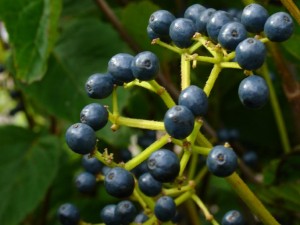
Viburnum is a huge genus of shrubs, both native and exotic. In fact, the venerable horticulture writer Michael A. Dirr devotes an entire book just to viburnums. We sell hundreds of this versatile, easy to grow shrub each year, and with good reason. Because there are so many, one might say there is a Viburnum for almost any purpose in the landscape.
We stock many common viburnums in a variety of sizes. Consider using one or more of the viburnums when you need a plant to fit the following situations: a semi-evergreen plant for screening, an upright plant for hedges, a showy highlight to a shrub border, a native plant to attract wildlife, a specimen for the small in-town garden, a plant to add a beautiful fragrance to a well-travelled area, or to fill a spot in a hedgerow, the list goes on.
Most viburnums will grow in average garden conditions, from full sun to part shade. Arrowwood, in particular will tolerate almost any soil type from lean to rich, moist to dry. However, more ornamental types will appreciate good soil and consistent watering to perform their best.
Below is a list of common viburnums and their characteristics:
Viburnum dentatum
(Arrowwood Viburnum)
This group of viburnums is native to North America and is well-suited to many areas of the island. They are all deciduous and have green, glossy, serrated leaves with with variable fall color. Their lacecap-shaped, white flowers appear in early summer, but are not particularly showy. However, they do produce deep blue/black berries that are somewhat ornamental and attractive to wildlife. These are mostly upright to gently arching, multi-stemmed shrubs that are suitable for informal hedges, native plantings, and to fill in hedgerows for screening at the perimeter of properties during summer.
Autumn Jazz (r): Bred for fall color, this variety tends to color up better than the species in the autumn with shades of yellow, orange, red and burgundy. It is one of the taller varieties, reaching 8-10 feet in ideal growing conditions.
Blue Muffin (r): Aptly named by the trade mark holders, Proven Winners, this newer arrowwood viburnum has striking light blue berries. It is a more compact selection, and should not grow taller than 7 feet.
‘Chicago Luster’: The “go to” dentatum for many landscapers; this plant is meant to be an overall improvement on the species. However, I would find it extremely difficult to tell the two apart. ‘Chicago Luster’ will grow up to 10 feet tall in wooded areas where exposure is limited.
Viburnum plicatum var. tomentosum
(Doublefile Viburnum)
This group of viburnums are native to China And Japan. The are deciduous with green, serrated, crinkled leaves that have a fuzzy under-side (tomentose). Fall color is not always appreciable, but is usually burgundy when apparent. Their elegant, white, lacecap-shaped flowers appear all along the branches in early summer. They do produce small berries, but the real show here is in the flowers! Their form is much more horizontal than arrowwood viburnums; pagoda-like in age, forming tiers of branches. They are suited to add to a large shrub border, where they are allowed to grow to mature size without constant pruning. Or site them closer to the house, and expect an annual trim to keep them in check. We also sell standard tree forms that would fit well into a garden in town as a lovely ornamental tree.
‘Marieseii’: Often confused with ‘Lanarth’ When in flower, this is my favorite viburnum, bar none. Introduced in 1870’s, this plant has stood the test of time. I would recommend only formative pruning, allowing the graceful natural form to develop. A mature specimen should reach 10 feet high.
‘Shasta’: Similar to ‘Mariesii’, this newer cultivar (introduced in 1979), is one of the large-flowered types that does not re-bloom. It tends to be shorter and broader than ‘Mariesii’, becoming wider than tall. Expect a mature plant to be between 8-10′ tall and 10-12 feet wide.
‘Summer Snowflake’: This is probably the most popular of the doublefile viburnums we sell at the nursery. I just wanted to clear up a few misconceptions about this plant. Although the tags all proclaim it to be “ever-blooming”, this plant does not flower heavily all season. The bulk of flowers arise in early summer, during the initial bloom period, when the entire shrub will be in full flower. But as summer moves along, the flowering slows down considerably and the effect is more like a pfffft of flowers here or there among the leaves. Also, keep in mind, this is not a dwarf in any respect. I’ve seen so many ‘Summer Snowflake’s planted in tight spots and pruned to within an inch of their lives. They are full-sized doublefile viburnums and will reach upwards of 10 feet, and nearly the same spread, if left unpruned.
Viburnum sieboldii ‘Seneca’
(Seneca Siebold Viburnum)
Seneca viburnum is probably the largest viburnum that we sell. Mature specimens will reach upwards of 20 and perhaps even 30 feet in ideal conditions. This plant could be considered more of a small multi-stem tree, if grown appropriately. The flowers appear just as the foliage is opening in early summer, making them extremely visible. Later as the flowers fade, the red fruit take the gardeners attention as they contrast with the large, rounded leaves. The distinct odor produced by crushing the leaf of a Siebold viburnum will always set it apart from others and make it easily identified.
